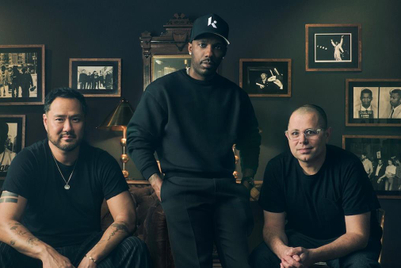AUSTRALIA - Production studio The Woolshed Co. has released the results of what it calls a two-year social experiment exploring the phenomenon of 'viral' videos and shareable content.
The company produced eight completely fake videos, which were nonetheless viewed in more than 180 countries around the world, racking up 164 years of YouTube watch time and generating significant news coverage.
The case-study video (above) clearly functions as a show reel for the production company's capabilities in special effects, but managing director Dave Christison said the experiment really intended to explore the creation and distribution of new media.
“We set out to better understand exactly how to create short-form, highly shareable, ‘snackable’ content, that is capable of reaching worldwide mass audiences, without the luxury of pricey media buys, ad campaigns, publicity strategies or distribution deals,” he said.
The content ranged from shark attacks to lightning strikes and from bears chasing snowboarders to drones falling into the Burning Man festival. People watched, shared then “argued like hell over their authenticity.”
According to the production studio, it was this debate over authenticity that propelled each video’s viral success.
In addition to garnering coverage on all three commercial networks in Australia, Network Seven, Nine and Ten, the videos also fared well internationally. The clips grabbed the attention of NBC, Fox, CBS, CNN, Sky News and ABC (USA) as well as networks across Europe, UK, Japan, Russia, Canada, China and South Korea.
Print and online publications also contributed to the buzz, with The Guardian, Sky News, News Limited, The Independent, The Mirror, The Sun, The Telegraph and Time Magazine all sharing the content, and weighing in on the debates.
The results:
- More than 500,000 comments
- More than 1.6 million likes
- 164 years YouTube watch time
- More than 205 million online views
The team experimented with concept creation approaches (figuring out what people want to click on next), production techniques (stock footage, editing, CGI, compositing), distribution, and seeding strategies—all to maximise shareability and entertainment value as the campaign progressed.
“We learned what worked, what didn’t, and what are absolute 'must haves' for any viral marketing campaign,” said Christison.
“Whether the story went for 20 seconds or two minutes, we aimed to take audiences on a ride that may shock them, make them laugh, make them cringe, but most importantly entertained them, no matter how brief, and no matter how questionable,” he added.
In response to queries from Campaign Asia-Pacific, Christison shared the following snapshot of fundamental lessons brands should take heed of:
- Story: “At the end of the day viral content is just another form of entertainment. Short, snackable entertainment. Which means that every viral was approached as a narrative. With a beginning, middle and an end. And just like short films, each required a hook and a payoff. So our biggest lesson was ensuring that no matter how short, or how simple, the basic fundamentals of storytelling were adhered to, to ensure success.”
- Promise of the premise: “A concept that makes you want to click play. Something with a hook or a 'promise' of a hook that makes you want to push through the first 10 seconds to see what happens next.”
- Debate: “Creating debate was always a strong contributor to success. To establish a promise that you wanted to believe was real, but your gut told you was fake. Debate propels the momentum and creating debate (whether it was via concept, convenience or even production value) didn't seem to matter in propelling the momentum forward.”
Christison also noted that there were regional slants when it came to which types of content fared well in certain markets.
“Yes, most of the regional responses were predictable,” he said. “For example, the video of the bear chasing the snowboarder did really well in Japan because it was set on a Japanese mountain. That video also got lots of views in Canada, another big snow-sports country—so some of the connections were obvious.”
In addition, the burning man drone video did really well in America, likely because that’s where the Burning Man Festival takes place. The lightning video did best in Australia, also where it was based.
“So there was a regional connection that drove popularity in certain countries,” he added.
CREDITS
Production studio: The Woolshed Co.
Director: Caspar Mazzotti
Director: Richard Hughes
Producer: Dave Christison


.jpg&h=334&w=500&q=100&v=20250320&c=1)

.jpg&h=334&w=500&q=100&v=20250320&c=1)
.jpg&h=334&w=500&q=100&v=20250320&c=1)

.jpeg&h=334&w=500&q=100&v=20250320&c=1)


.jpg&h=334&w=500&q=100&v=20250320&c=1)



.jpg&h=268&w=401&q=100&v=20250320&c=1)

.jpg&h=268&w=401&q=100&v=20250320&c=1)
.jpg&h=268&w=401&q=100&v=20250320&c=1)

